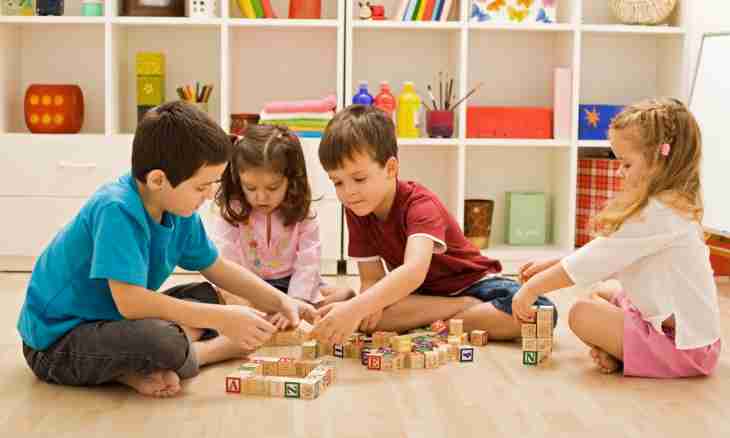The ideas and methods of the Italian teacher Maria Montessori won the whole world. Business even not that her pupils without coercion by 3-5 years began to read and had an idea of all arithmetic actions. Touch development of the child - education of feelings (sight, hearing, sense of smell, taste) and development of fine motor skills by creation of specially prepared environment became the main task of pedagogics of Montessori. A set of didactic games for touch development of the child in house conditions is offered to your attention.
It is required to you
- - thin rope 1-1.5 meters long
- - 10-12 metal paper clips
- - set of color plasticine
- - basket or plastic bucket
- - two deep cups
- - flat bowl
- - 300-500 gr. semolina, millet, sugar or clean sand
- - on 7 beads of red, green and yellow colors
- - sacks from identical dense opaque fabric with ties
- - nuts of the different size and form (walnuts, filbert, cashew)
- - small cubes from the designer
- - dry leaves
- - pieces of foam rubber
- - sponge of the size of a children's palm
- - kitchen towel
Instruction
1. "We pick berries". Pull a rope between backs of 2 chairs. In advance roll green and red balls from plasticine and pin them on paper clips. Suspend paper clips with balls on a rope. Suggest the child to walk in the imagined wood for berries. The basic rule is to break balls on one three fingers of the right hand, and left to hold a paper clip at this time. The child has to put the broken "berries" accurately in the basket standing to the right of him (accustom to the movement from left to right, as by the letter).
2. "We strew paths". Suggest the child to sand (semolina, millet) a path on a table 3-5 cm wide. For complication of a task limit a path to something, for example, strips of paper or "fence" from the put pencils. Sand should be poured three fingers of the right hand, having put them a pinch. It is impossible to go paths over the edges. Girls can suggest to sugar cake from plasticine. Thus, fingers for work with a handle/pencil develop, and the child learns to observe a clear planimetric boundary.
3. "Help to the Cinderella". Tell the child the reduced version of the tale of the Cinderella, focusing attention on the moment when the stepmother forced the girl to sort grain/haricot/peas. Pour out in a bowl of a bead of different flowers, put deep cups nearby. Suggest the child to help the heroine of the fairy tale to spread out the imagined grain on cups according to a certain color.
4. "Guess". Fill bags from dense fabric with different fillers: 1 bag - pieces of foam rubber, 2 - dry leaves or pieces of the crumpled paper, the 3rd walnut, 4 - small cubes, etc. Carefully tie bags that contents did not drop out at various manipulations. Suggest the child to guess what lies in each sack, by means of palpation. Also the child can shake sacks, listening attentively to the turning-out sounds. Thereby fine motor skills, touch and hearing develop and also concepts "soft-firm", "big-small", etc. are formed.
5. "Magic sponge". Put on a table two deep cups at distance of 3 cm from each other, fill one cup with water to the middle. Prepare a kitchen towel (or any rag). Take a sponge and show to the child of its property: as it is correctly necessary to gather water a sponge and to squeeze out. Suggest to transfer as a magic experiment water a sponge from one cup to another. Show as it becomes, having purposely spilled a little water on a table. Fix a concept of the child about the absorbing properties of fabric, having removed water by means of a towel or a rag. This exercise will allow the child to learn to clean up independently spilled water or juice.

